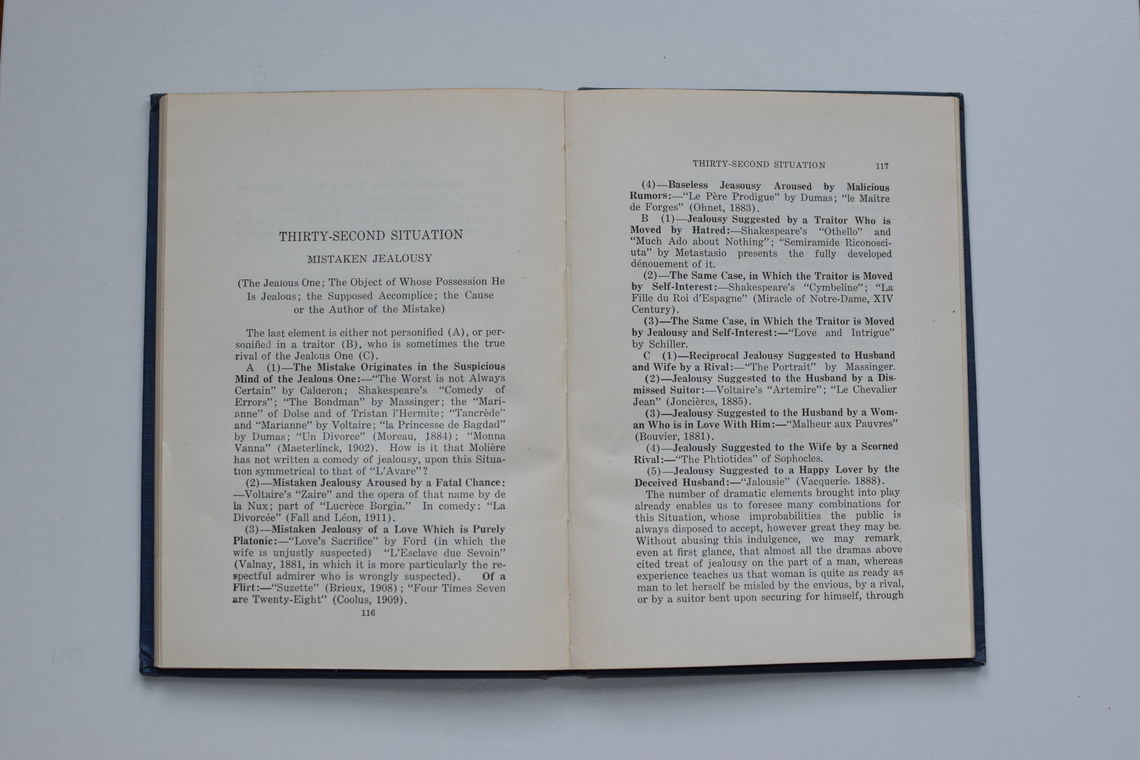The Thirty-Six Dramatic Situations
-
Georges Polti’s Les trente-six situations dramatiques (1895) drew on works from ancient Greek plays to 19th-century French novels to draw out and categorize what he theorized were the timeless and durable elements of narrative– all those that “ever will be,” he wrote. According to Polti, these elements could be distilled into 36 situations that structured human experience, from vengeance and retribution to love and sacrifice.
Each of the 36 situations is summarized and broken down into its elements. For example, Situation 4, “Vengeance taken for kin upon kin,” is described as “Two entities, the Guilty and the Avenging Kinsmen, are put into conflict over wrongdoing to the Victim, who is allied to both.” It requires a “Guilty kinsman; an Avenging Kinsman; remembrance of the Victim, a relative of both.” An example, of course, is Hamlet.
Polti’s work, translated into English in 1916, became a popular writers’ aid, forecasting a century of narrative lists. It remains in print today, used alongside updated versions of meta-plot analysis like Christopher Booker’s Seven Basic Plots (2004), which boil all narratives down to “Overcoming the Monster,” “Rags to Riches,” The Quest,” “Voyage and Return,” “Comedy,” “Tragedy,” and “Rebirth.”
“Now, as to this declared fact that there are no more than thirty-six dramatic situations, is attached a singular corollary, the discovery that there are in life but thirty-six emotions . . . as it was in the ages of man’s hand-to-hand struggle with the wild beasts of wood and mountain, and as it will be, indubitable, in the most indefinitely distant future, since it is with these thirty-six emotions— no more— that we color, any, we comprehend, cosmic mechanism, and since it is from them that our theogonies and our metaphysics are, and ever will be, constructed; all dear and fanciful “beyonds;”— thirty-six situations, thirty-six emotions, and no more.”
Introduction
- Label
- The Thirty-Six Dramatic Situations
- Author
- George Polti (translated by Lucille Ray)
- Original Publication Date
- 1895
- New Publication Date
- 1917
- Publisher
- The Editor Company
- Location
- RBML
- Case
- 2
